Throwback Thursday: Thirsty Thursday (Moonshine Making at Yellow Springs)
Uncovering Clues of a Secret Setup in the Connie Fraley Studio Basement
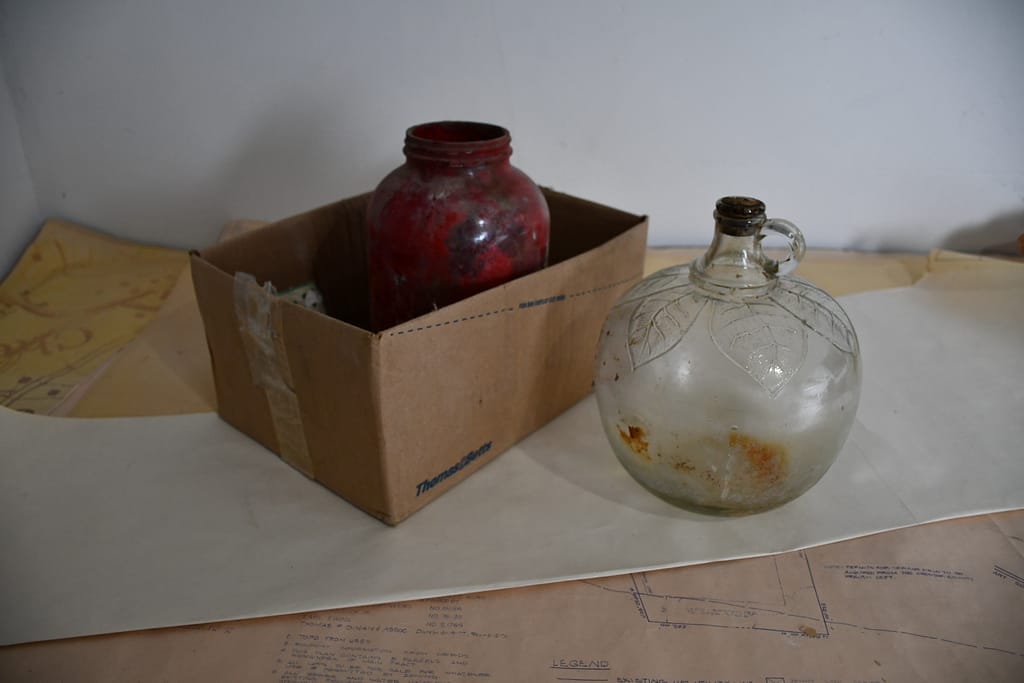
Buried Bottles Beneath the Floorboards
During the recent renovations of the Connie Fraley Studio, our team found an interesting collection of glass and old bottles in the basement. Most of them were dusty, lacked labels, and were splattered with red paint. It looked like they hadn’t been touched in many years.
One of the items is a glass jar filled with old paint. It was potentially a pickle jar in a past life, but we can’t know for sure.
This jar stands out from the other bottles, but it shows that the whole collection was hidden away at the same time since the paint residue inside it is splattered on several other bottles.
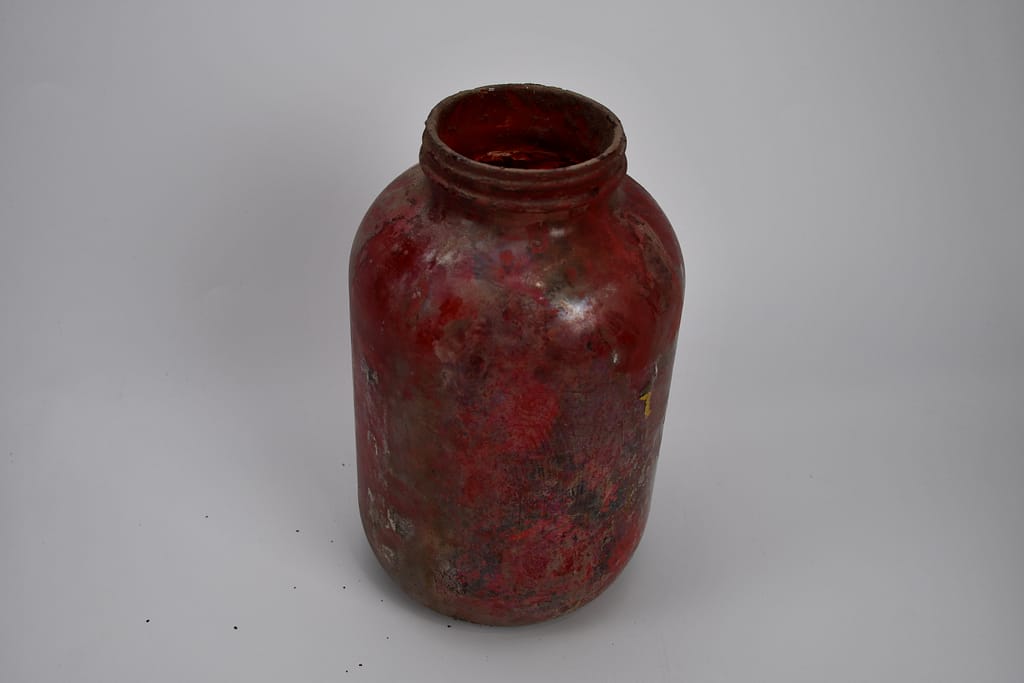

These bottles looked rather old, so we were intrigued to discover more.
Among them, one unusual bottle stood out. It had a rubber stopper and a uniquely modified top– that seemed far too intentional to be accidental.
The Curious Case of the Homemade Distiller
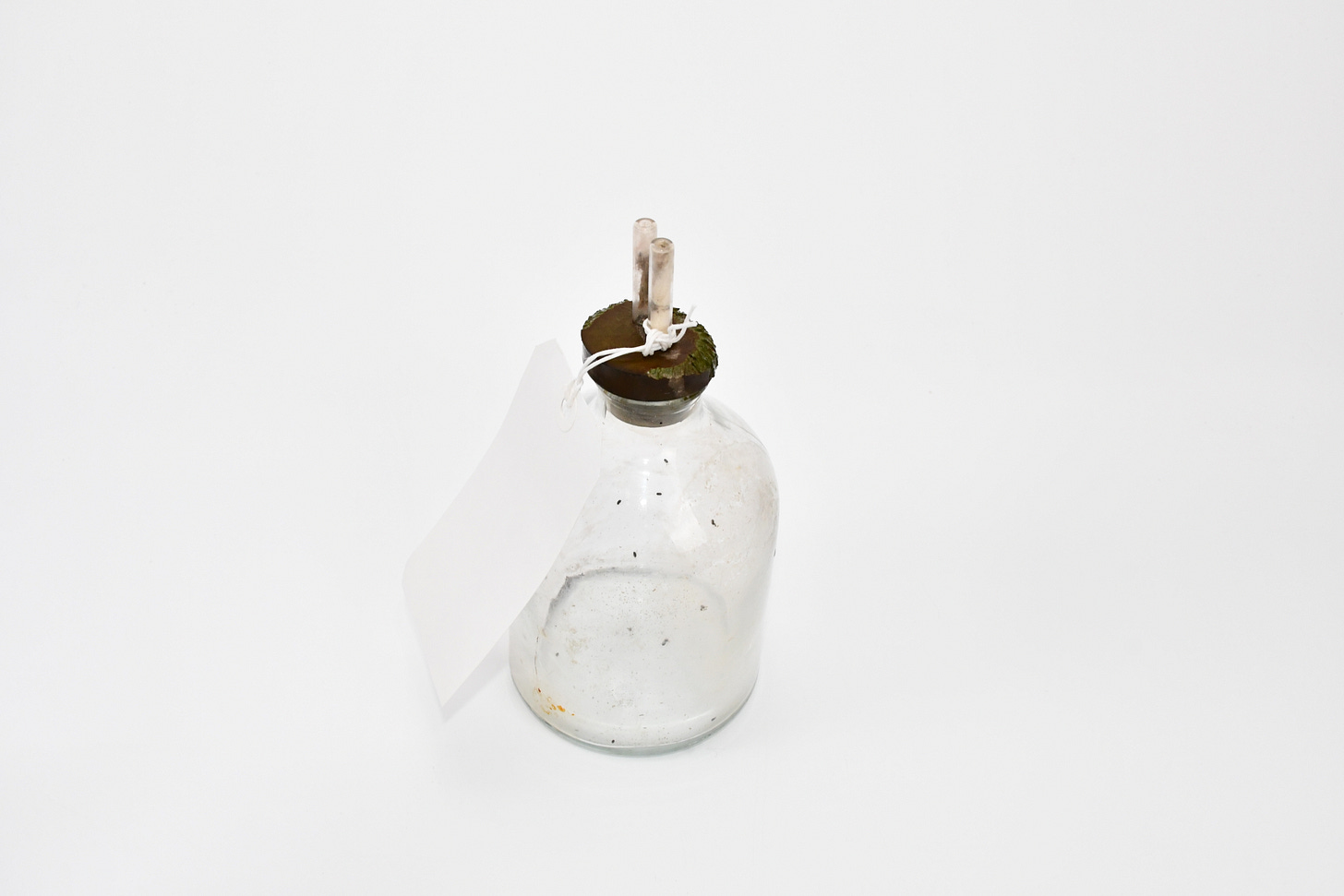
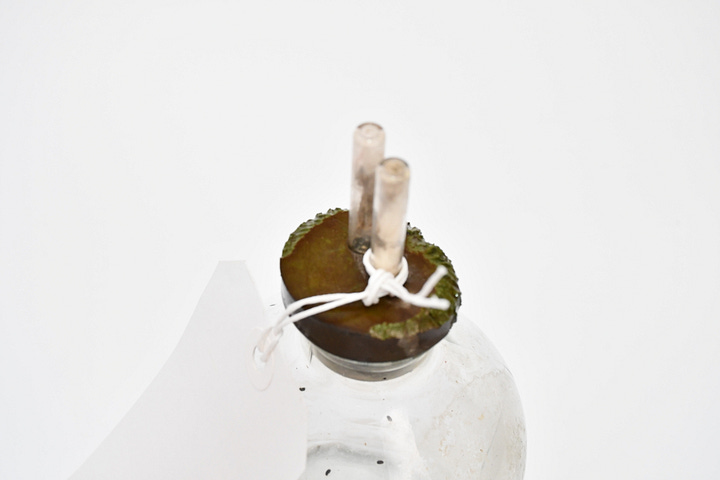
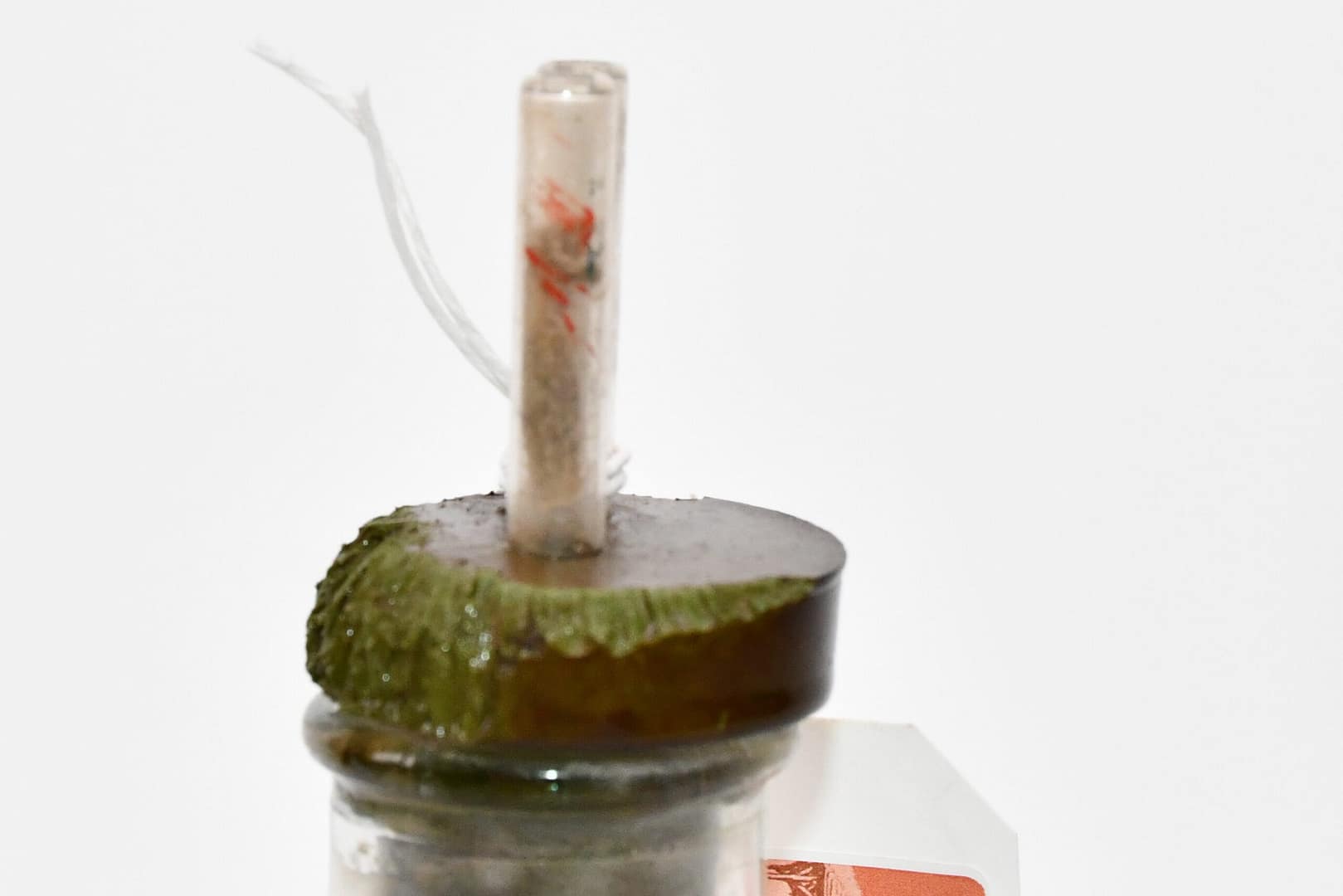
We looked closely at a strange bottle and saw that it looked like the bottom part of a small distillation device.
Its shape and materials suggested that it might have been a boiling flask used in steam distillation.
A similar type of scientific glassware can be found in modern distillation equipment (like in this example, sold by Humboldt Scientific. )
This resemblance made our archivist curious about whether people at the PAFA country school ever tried distillation themselves.
The Apple Cider Jug
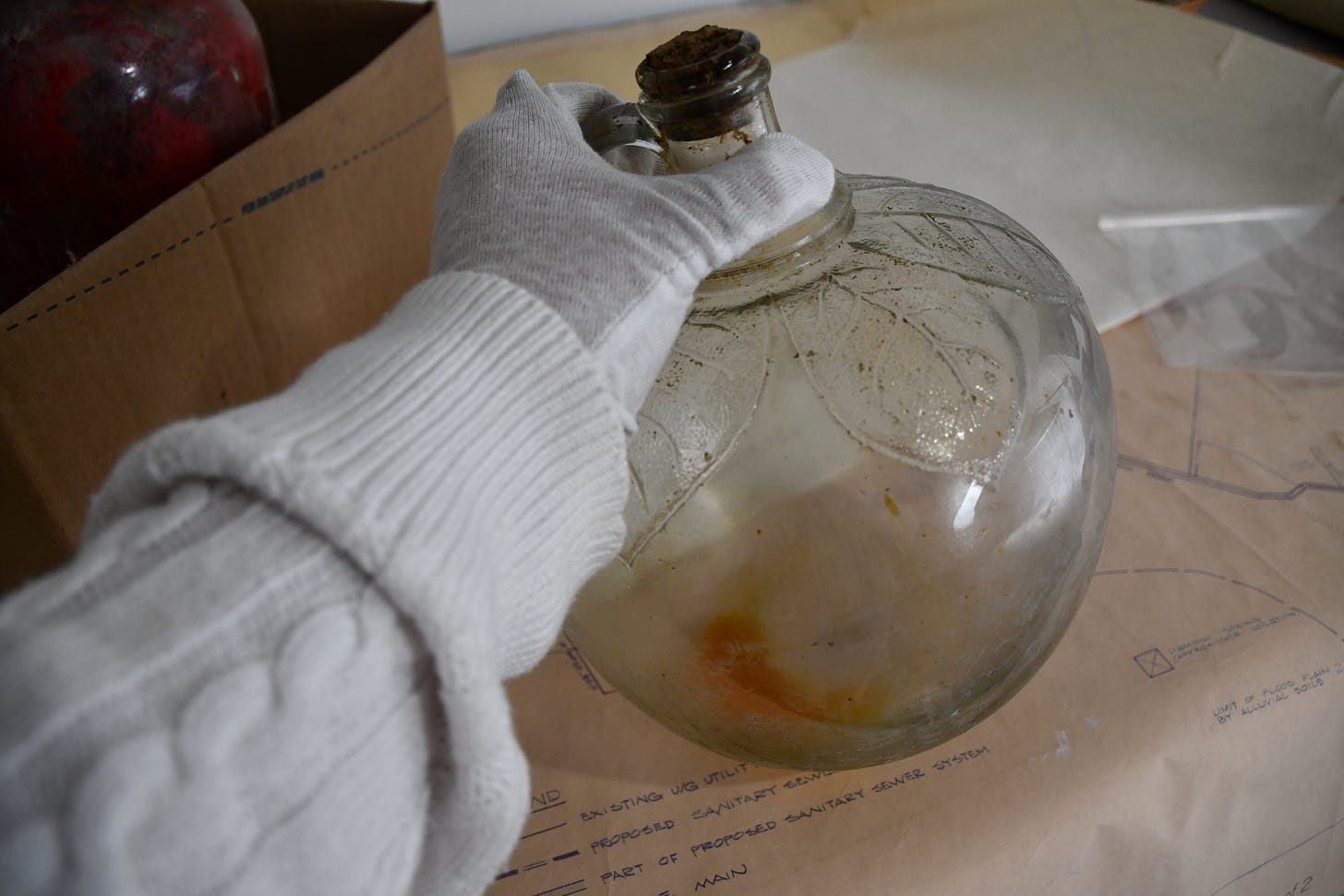
We noticed another interesting bottle in the collection.
It was a corked jug with a leaf design on it and had a strange residue at the bottom.
Its unique shape helped us identify it as a 1933 Martinelli’s apple cider jug, from the end of Prohibition.
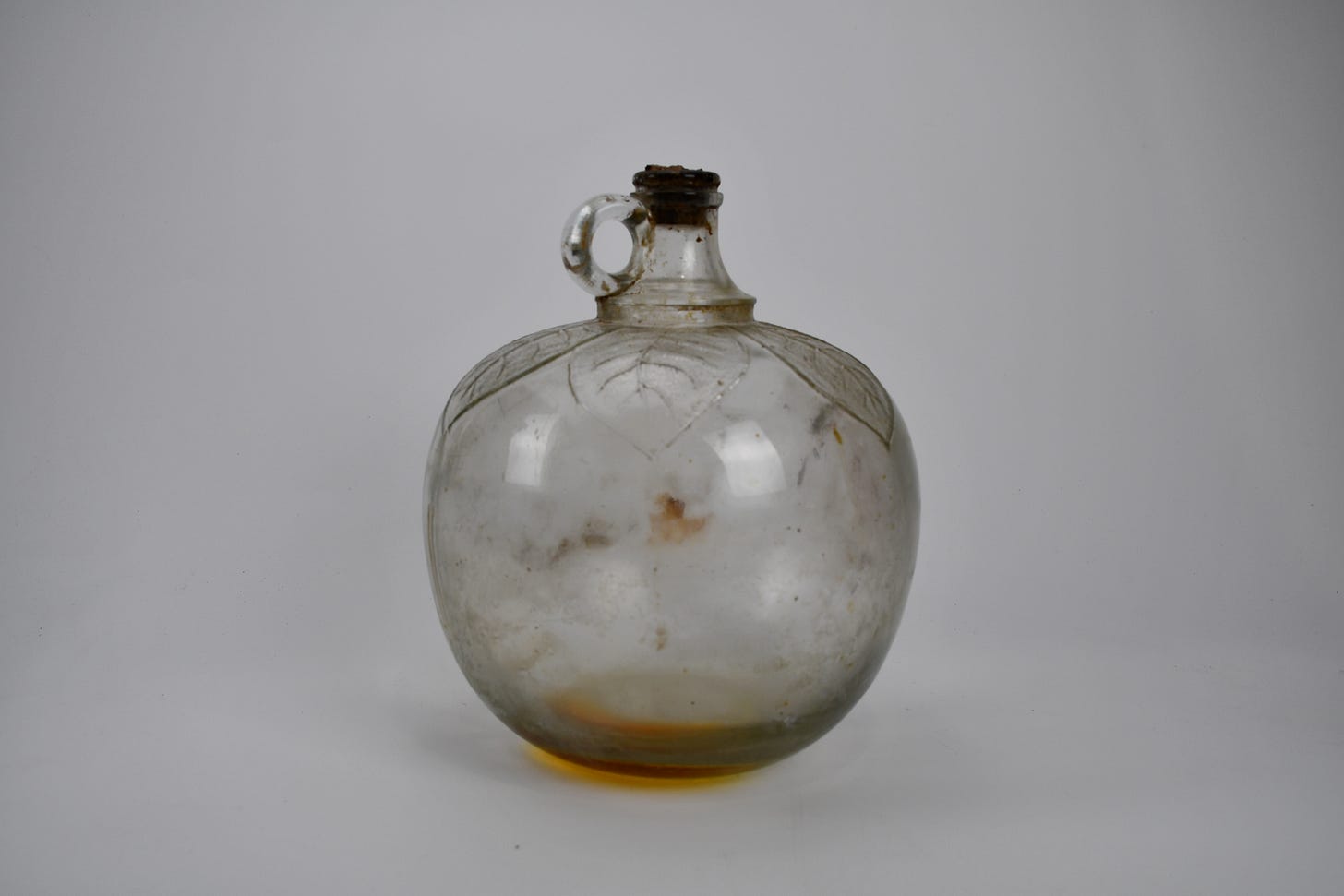
According to Martinelli’s company history, “In 1933, when Prohibition was overturned by the 21st amendment, Martinelli’s reintroduced its Hard Cider. The company also continued making its newer and increasingly popular non-alcoholic sparkling cider. This same year, the company patented the design of its apple-shaped bottle for its juice, known as the ‘Golden Apple,’ and paired it with the new slogan ‘Drink Your Apple A Day.’ This slogan and our apple-shaped bottles are still hallmarks of the Martinelli’s brand today.”


We think this bottle is an unopened cider from 1933 because the cork is still in place and there is some residue inside.
That strange amber substance is probably the last bit of ninety-year-old apple cider that hid under the floors of Fraley Studio for many years.
Bottles of the Post-Prohibition Era

The rest of the find contained several old bottles, but most of the labels gone, or were so worn that we could not read them.
However, on the bottom, there are letters written into the glass of the bottles themselves. This is called embossment.
The embossed markings gave us more details than the paper labels could.

Some of the bottles had the words, “Federal Law Forbids Sale or Reuse of This Bottle.”
This message appeared on American liquor bottles from 1935 to 1964 as a rule to stop the sale of bootlegged and homemade alcohol in reused bottles.
This means our finds are from the time after Prohibition, when Yellow Springs was still a country school for art students under the Pennsylvania Academy of Fine Arts.
Decoding the Markings

Intrigued by the codes molded into the glass, we began cataloging the bottles.
One read D-19 56-42, another D-126 9-42, and a third D-126 12-A-48.
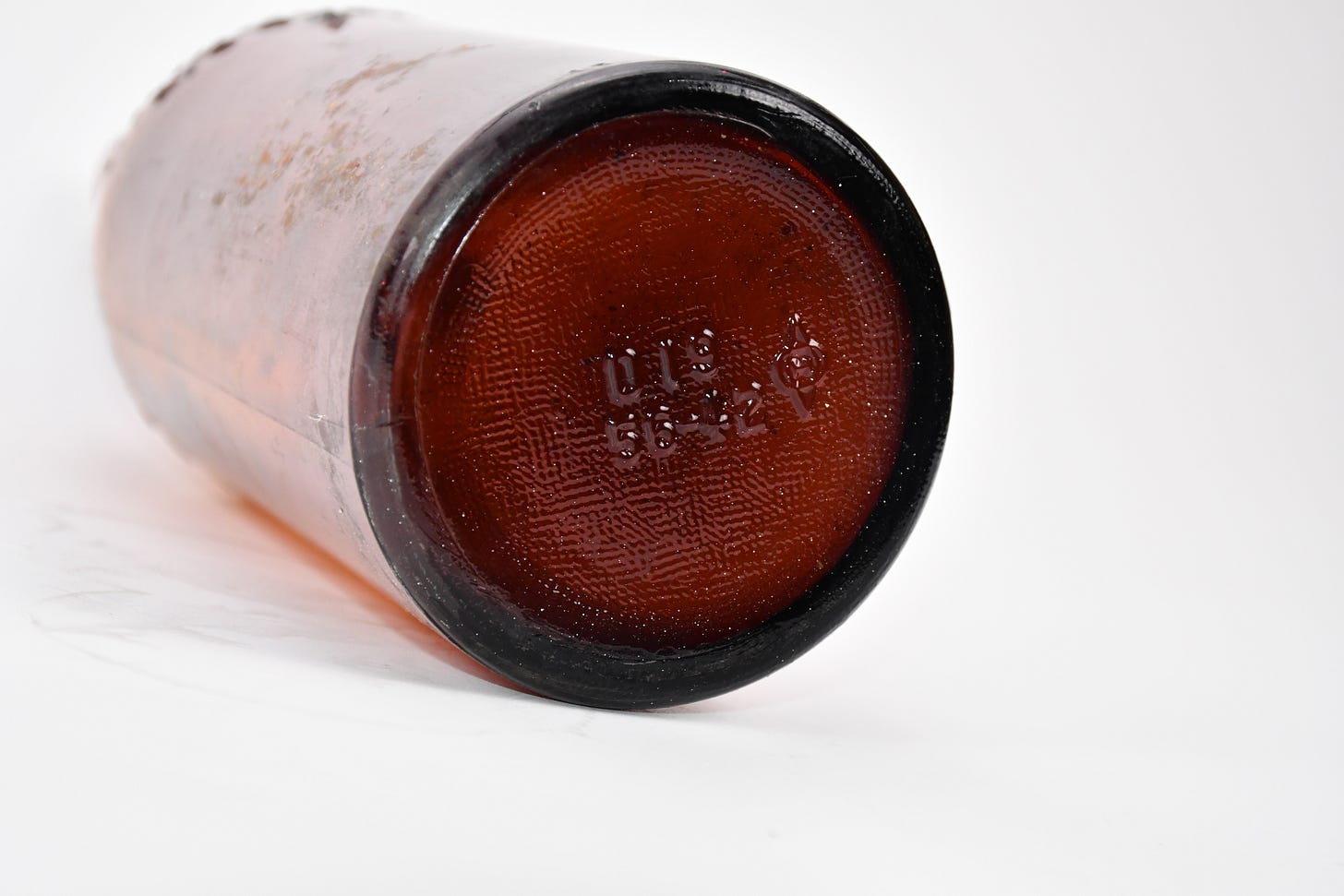
Every bottle of alcohol produced between 1935 and 1964 has the phrase “Federal Law Forbids Sale or Reuse of This Bottle” on it. This statement was required by the U.S. government to stop the sale of illegal liquor.
Each bottle also has a letter (usually “D”) followed by a number, which shows the distillery’s federal permit.
To sell alcohol legally during this time, each bottle had to be linked to a registered distillery. To find out where each bottle came from and when it was made, the archivist used Eric Burke’s 2024 database of distillery permit numbers.
The numbers on the bottle include the distiller’s license and the production date. The last two-digit number, like 42 or 48, tells us the production year, meaning 1942 or 1948. This helps us know exactly when these bottles were made.
1. D-19 56-42

This bottle has the code D-19 56-42 on the bottom, along with the words A. Overholt and 4/5 Quart on the sides.

The Overholt brand is a brand rye whiskey once made in Pennsylvania. Because we have the brand name, we could easily identify the manufacturer of this bottle.

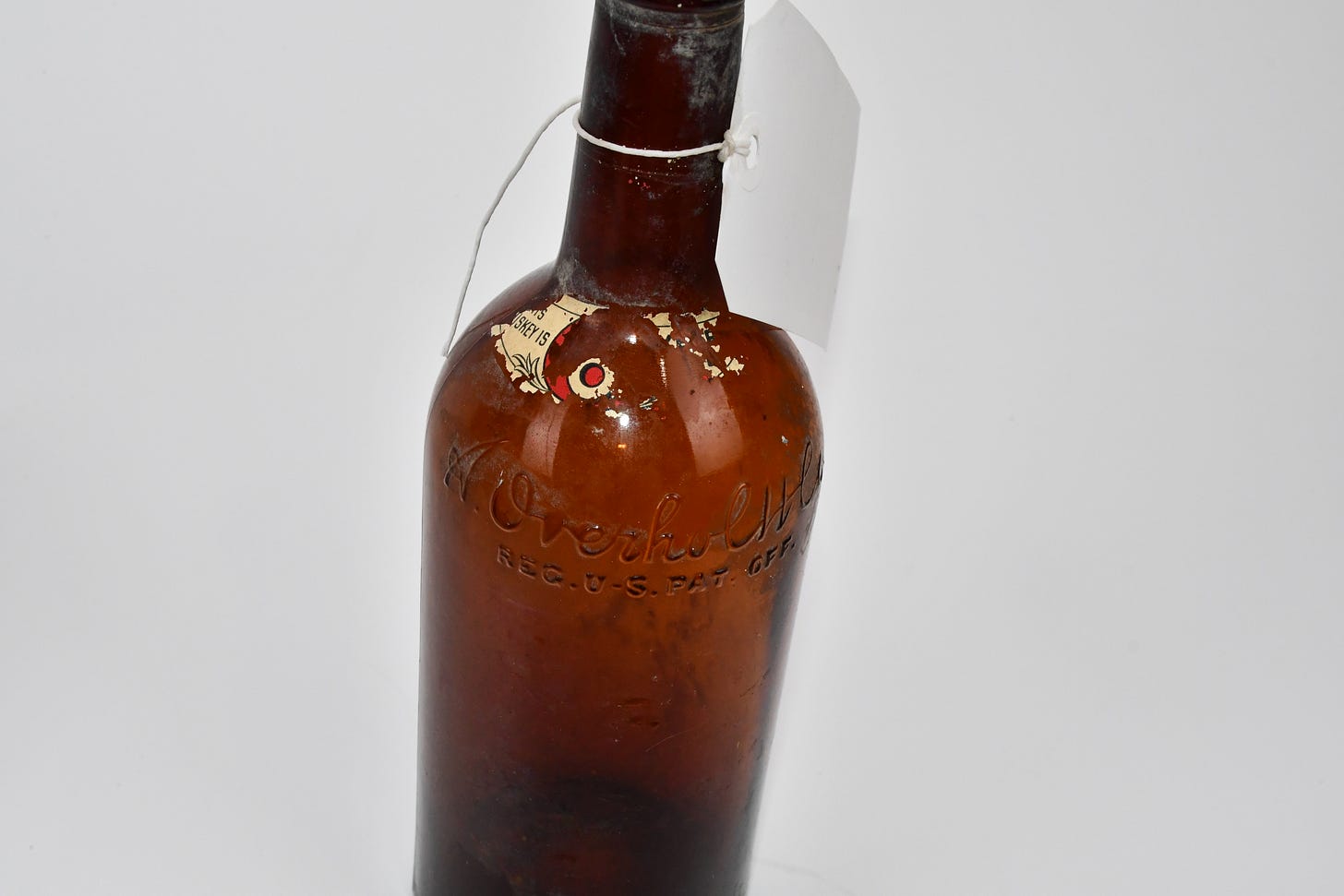
In this marking, D-19 shows the distillery permit number, 56 indicates the glass plant (likely Owens-Illinois), and 42 stands for the year 1942.
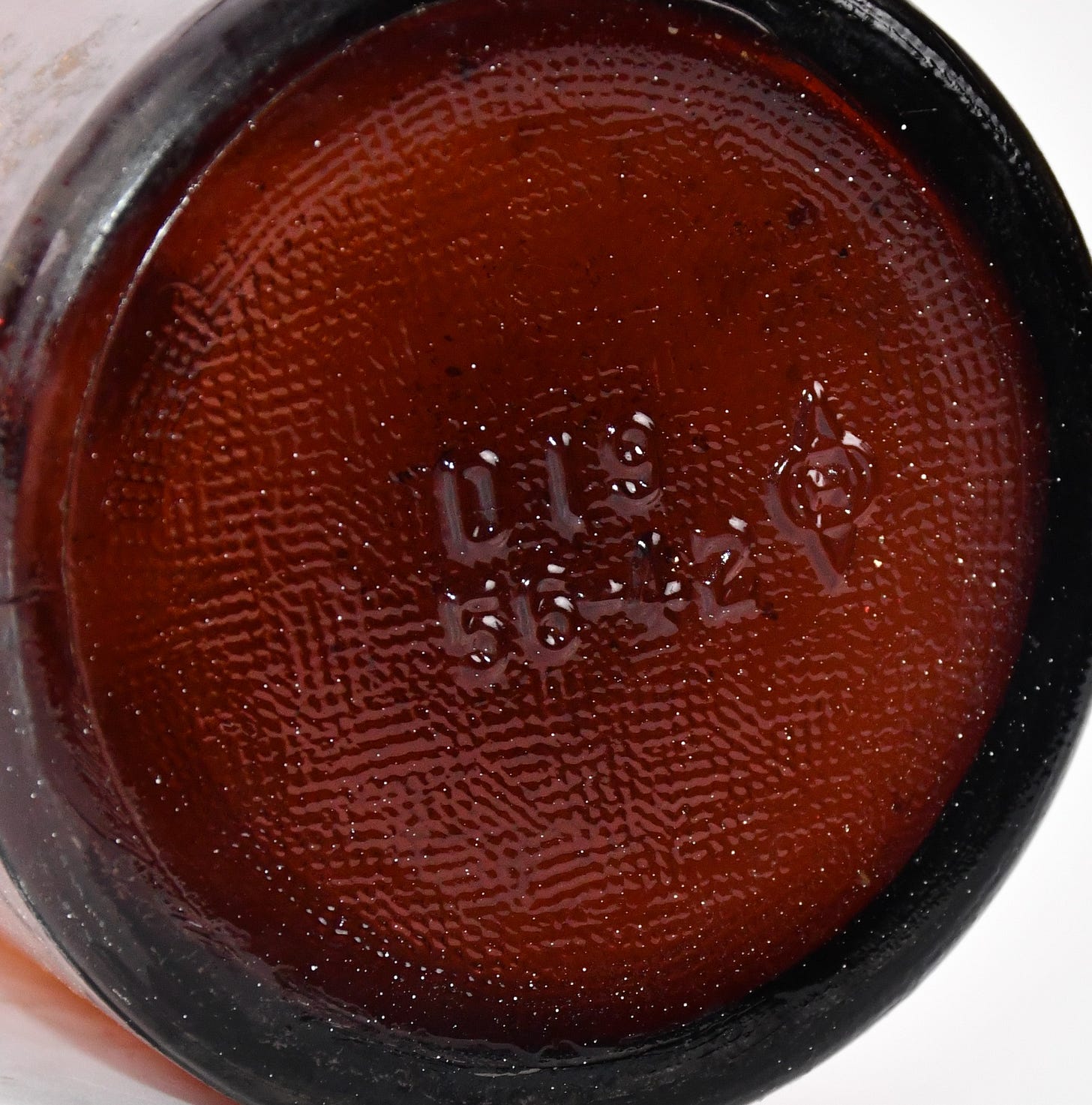
The archivist confirmed the bottle’s identification by finding a matching A. Overholt bottle on eBay.
This bottle had the same embossing, proportions, and a D-19 56-42 code.
It also featured A. Overholt branding molded into the glass, but it did not have its original paper label.
Still, this listing verified that our bottle was similar to known Overholt examples from the early 1940s.
2. D-126 9-42
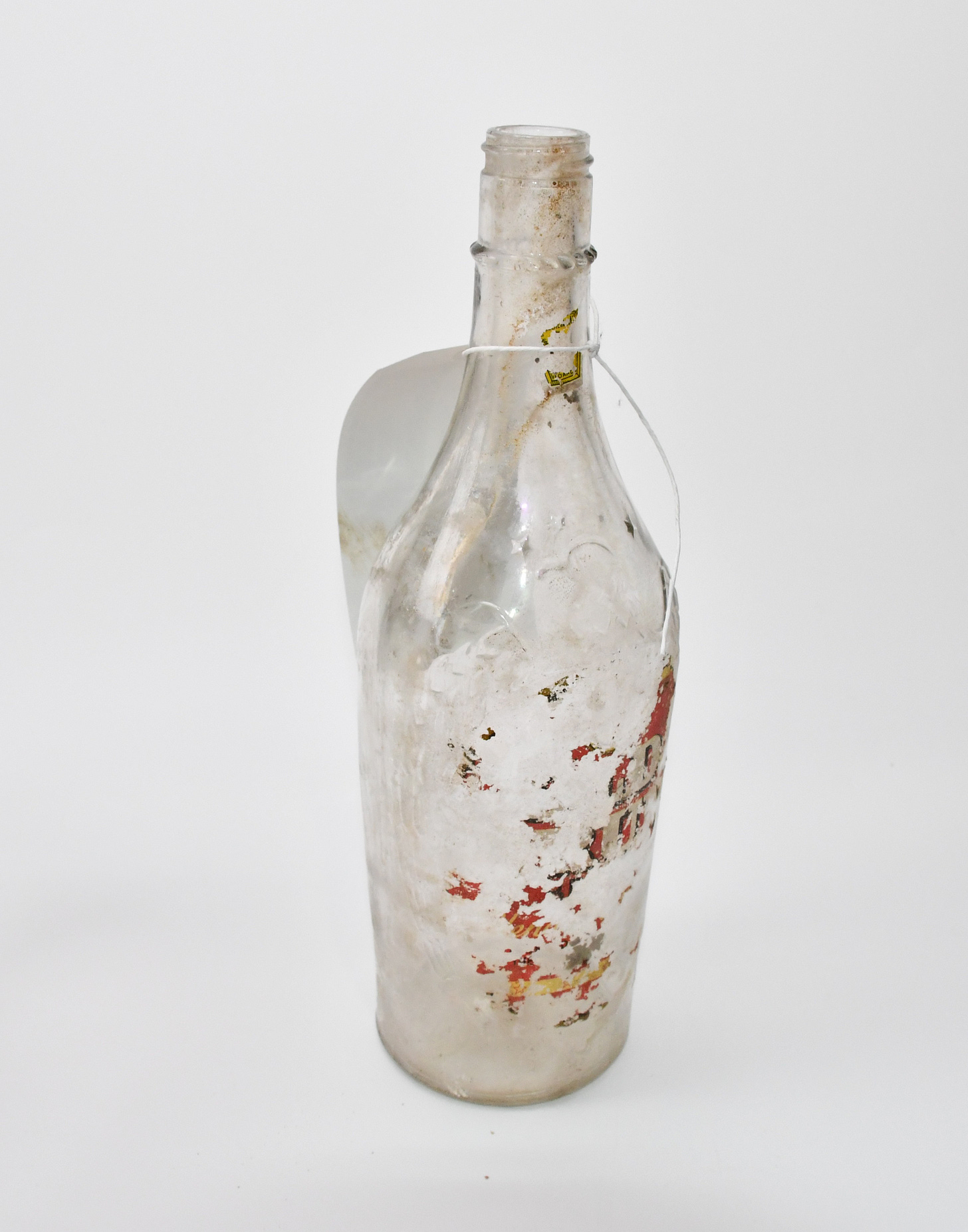
We found another bottle with a faded label that had the code D-126 9-42.
We looked up this number in Eric Burke’s permit database and found that D-126 belongs to Seagram’s Distillers Corporation.

The anchor symbol on the bottom shows that the glass was made by Anchor Hocking Glass Company in Lancaster, Ohio. The numbers 9-42 confirm that it was made in 1942.
This bottle likely held Calvert Whiskey, a brand owned by Seagram’s at that time.
Its clear glass and design details, including an eagle design on the side, are similar to other bottles from that era.
We found a sample of this one in an online listing too.
3. D-126 12-A-48

Our third bottle, marked with D-126 12-A-48, was a bit harder to find. We knew the distillery from Burke’s distillery database, but the extra “A” in the code puzzled us.

After some research, we found out that the “A” was added to the identification code. The part 12-A pointed to the Torch Lake Brewery bottling facility.
This facility was once known only by the number 12. At some point, it wasn’t registered in the federal system. The “A” was added after it got officially licensed, to help distinguish between bottles that were not legal to sell and those that were.
According to Copper Country Bottles, Torch Lake operated under Seagram’s federal license in the late 1940s.
It also regularly bottled Calvert whiskey, but in a differently shaped bottle, made from different colored glass, and by a different manufacturer.
Recipe for Rebellion
Considering the collection of a cider jug, paint-splattered bottles, and a homemade distillation setup, you can imagine the story behind it.
Maybe a group of struggling art students, or a creative groundskeeper, tried to make their own alcohol in the basement.
It’s possible that someone found these items and put them there to keep other people from using. These items could also just have gotten forgotten and left behind at some point in our past.
We don’t know the exact story, but we can see some interesting clues. The sealed cider jug might have been left to age because cider naturally turns into alcohol over time, and the other items strongly suggest they were used for a similar purpose.
Whatever happened, you can picture a small group of PAFA students, focused on art and painting, gathering in the basement with paint on their hands and laughter all around, trying their own version of ‘creativity’.
It seems that in Yellow Springs, inventiveness extended beyond just art.
As the world recovered from WWII, we can imagine that life here -perhaps- had a good few more good spirits.

🥃🎨🍏
Learn more about the history of Yellow Springs
You can read the more in-depth version of this post here
Follow us on Substack, Instagram, and Facebook
🥃🎨🍏